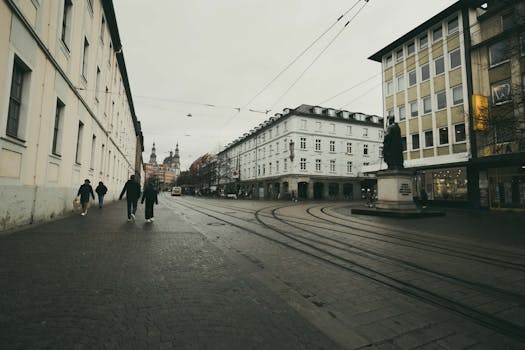
Urban Green Spaces: The Future of Outdoor Living in European Cities by 2025
Urban Green Spaces: The Future of Outdoor Living in European Cities by 2025 is a pressing concern for city planners, architects, and citizens alike. As the world becomes increasingly urbanized, the importance of green spaces in cities cannot be overstated. These areas not only provide a tranquil escape from the hustle and bustle of city life but also play a crucial role in promoting sustainability, improving air quality, and enhancing the overall quality of life for urban residents.
Introduction to Urban Green Spaces
Urban green spaces refer to any area of vegetation in an urban environment, including parks, gardens, green roofs, and even small patches of grass or plants in between buildings. These spaces are vital for maintaining ecological balance, supporting biodiversity, and mitigating the urban heat island effect. Moreover, they offer numerous benefits for human health and well-being, such as reducing stress, improving mental health, and providing opportunities for physical activity and social interaction.
Benefits of Urban Green Spaces
The benefits of urban green spaces are multifaceted and can be categorized into environmental, social, and economic advantages. Environmentally, green spaces help to absorb carbon dioxide, reduce noise pollution, and protect against extreme weather events. Socially, they foster community engagement, provide spaces for recreation and leisure, and promote a sense of place and identity. Economically, well-designed and maintained green spaces can increase property values, attract tourism, and support local businesses.
Challenges and Opportunities
Despite the numerous benefits of urban green spaces, there are challenges that need to be addressed. One of the main obstacles is the lack of space in densely populated cities, which can make it difficult to allocate areas for green spaces. Additionally, maintaining these areas requires significant funding and resources, which can be a challenge for cities with limited budgets. However, these challenges also present opportunities for innovation and creativity in urban planning and design.
Case Studies and Examples
Several European cities are leading the way in incorporating urban green spaces into their urban planning strategies. For example, Copenhagen’s carbon neutral ambitions are heavily reliant on its extensive network of green spaces, including parks, gardens, and green roofs. Similarly, Barcelona’s Superblock program aims to reduce traffic and increase green spaces, making the city more livable and sustainable. These case studies demonstrate the potential for urban green spaces to transform the future of outdoor living in European cities.
Conclusion
In conclusion, Urban Green Spaces: The Future of Outdoor Living in European Cities by 2025 is a critical aspect of creating sustainable, livable, and resilient cities. By understanding the benefits, challenges, and opportunities associated with urban green spaces, city planners, architects, and citizens can work together to design and maintain these areas, promoting a better quality of life for all. As we look to the future, it is essential to prioritize the development and preservation of urban green spaces, ensuring that they continue to thrive and support the well-being of urban residents for generations to come.





